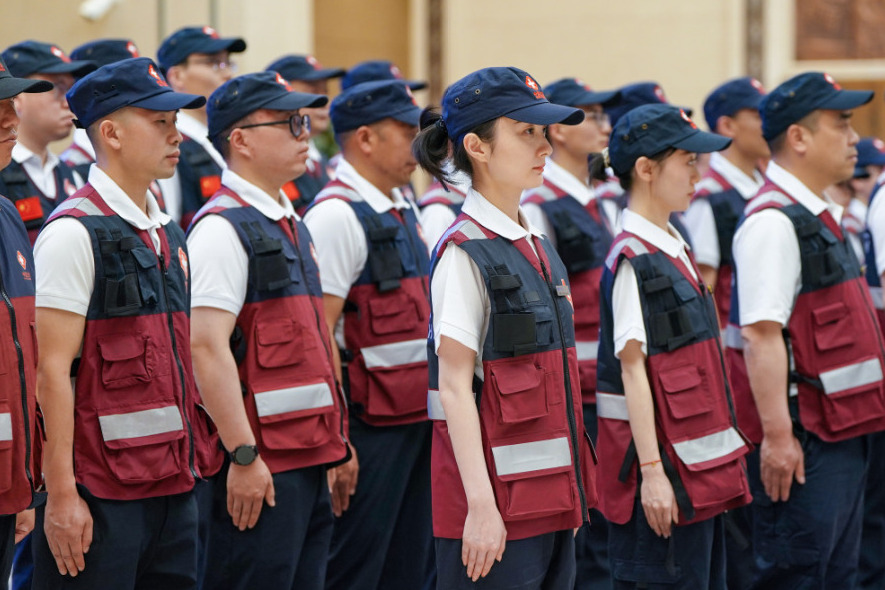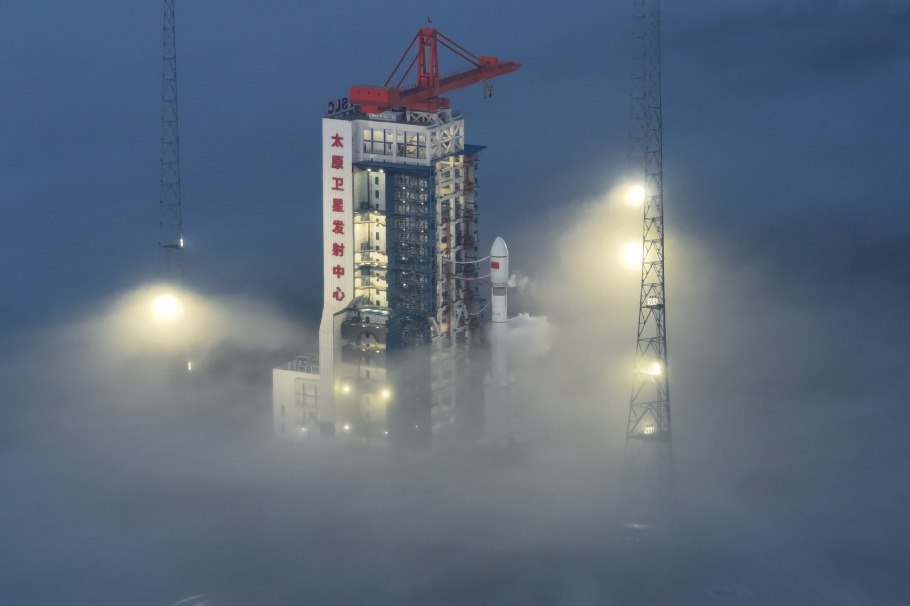China plans mission to bring Martian soil to Earth


China is likely to become the first country to bring Martian soil back to Earth in an ambitious science and engineering endeavor, according to a top space scientist.
Wu Weiren, an academician at the Chinese Academy of Engineering and a leading scientist at the China National Space Administration, said earlier this week in Wuhan, capital of Hubei province, that the nation plans to collect Martian samples and then bring them back to Earth around 2030 via a historic mission named Tianwen 3, the third in China's interplanetary exploration schedule.
"Based on the current progress of other nations' Martian exploration projects, China is expected to become the first to complete a sample-return mission from Mars," he said, noting that the country has started to set up the world's first Martian sample laboratory.
He did not elaborate on detailed schedules about the planned mission.
According to mission planners at the CNSA, the Tianwen 3 robotic probe will have four components — a lander, an ascender, an orbiter and a reentry module — and will be launched on two Long March 5 heavy-lift carrier rocket flights from the Wenchang Space Launch Center in Hainan province.
The lander and ascender will take an Earth-Mars transfer trajectory and carry out orbital correction maneuvers before entering the Martian orbit, after which they will attempt an engine-assisted soft-landing.
Meanwhile, the orbiting stack — the orbiter and reentry module — will follow the same path to reach the Martian orbit, after which they will fly around Mars to relay signals and wait for the samples.
Once the samples are collected and packed into a vacuumed metal container, the ascender's engines will elevate it to orbit to rendezvous and dock with the reentry module, transfer the samples and undock.
The orbiting stack will leave the Martian orbit and return to the Earth's orbit, where the pair will separate and the reentry module will conduct complicated maneuvers to return to a preset landing site.
If everything goes according to plan, the samples could become the first to be returned to Earth from Mars, and will help scientists look for traces of life on Mars, learn more about the planet's geology and inner structures, and understand its atmospheric cycles.
All this will allow researchers to expand their knowledge about the creation and evolution of Mars, according to mission planners.
Yang Yuguang, a senior space industry observer and vice-chair of the International Astronautical Federation's Space Transportation Committee, said on Friday that humankind has achieved many remarkable feats in the history of space exploration, including several successful robotic Martian expeditions, but no one has ever attempted to bring samples back from Mars because it would be an extremely difficult and sophisticated procedure.
"First, anyone who wishes to retrieve Martian soil needs to, in the first place, take to the planet a craft which can lift off from the Martian surface to send samples to Martian orbit, and that means such a craft must be large enough to contain engines and propellants.
"And landing a large craft safely on the Martian surface would be exceptionally challenging, considering the fact that landing on Mars is far more difficult than a lunar landing due to the complex atmosphere surrounding Mars," he said.
Even if an ascending craft could land on Mars and it could lift off, Yang said that a new challenge would follow — how to guide it to carry out an accurate rendezvous and docking with the orbiter flying around the planet to wait for samples.
"In our lunar sample-return missions, the most complicated part was the in-orbit rendezvous and docking between the sample-carrying craft and the orbiter, and that operation at least had Earth-based telemetry and other types of technical support. By comparison, there will be virtually no technical assistance in the same process taking place in Martian orbit due to the very long distance," the expert explained.
China launched its first Mars program, Tianwen 1, in July 2020. It was the country's first independent interplanetary exploration endeavor.
The landing craft of Tianwen 1 touched down on the Martian surface in May 2021 and then released a rover, Zhurong, to perform scientific tasks.
Tianwen 2, a robotic mission to retrieve samples from an asteroid, is scheduled for launch around 2025 and is expected to return to Earth with samples around 2027, according to space authorities.
- Domestically developed amphibious aircraft given approval for delivery
- PLA deals successfully with Philippine vessel
- China expected to achieve higher grain output in 2025: report
- Chinese firms to lead transformation and competitiveness in AI era
- Images: The ancient Xiamei village in Fujian
- Road collapse leaves two dead in Shanxi






































